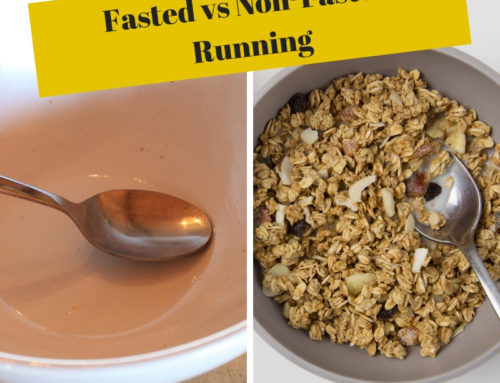There are certain pieces of exercise equipment that I wish didn’t exist. Or at least I wish there were signs on them that said, “By using this piece of equipment, you are wasting your time.”
These machines are non-functional and some increase your risk of getting an injury. There are more than just five, but here are five that you should leave out of your routine. Instead, check out other exercises that are more effective.

Adductor/Abductor Machines
Not only can use of these machines look a little awkward, but they are ineffective at developing the muscles they say they are strengthening. These machines are geared to work the adductor muscles (inner thigh) and the abductor muscles (outer thigh) in isolation.
Yet, they are ineffective because these specific muscles work in coordination with the rest of the body. We use these muscles to help stabilize our legs and hips.
Try this instead
To effectively strengthen these leg muscles, consider doing exercises in the frontal plane (side-to-side). Include side lunge variations or sumo squats.
If you have consistently strength trained, add single-leg exercises into your routine. Single-leg exercises, like single-leg squats or reverse lunges, are fantastically effective at engaging the abductors and adductors. Plus, they are much more functional for everyday athletes.
Treadmill at Too High of Incline
Walking is an excellent form of cardiovascular exercise. We know adding incline is a great way to strengthen leg muscles and increase caloric burn.
Yet, if you put the speed and incline so high you are holding the handlebars, you’ve now taken a great exercise and made it a lot less effective. Holding onto the handlebars creates improper alignment and can cause back problems or other injuries. Holding on also reduces the amount of work your body does because you’ve transferred the workload back to the machine.
Try this instead
Decrease the speed or incline. Focus on walking at an intensity you can maintain with proper form. If you want to build up to faster speeds and higher incline, add intervals into your cardio routine.
Seated Rotation Machine
Rotation movements occur in everyday life and especially in certain sports. It makes sense to perform rotation exercises. But when you take a seat on the seated rotation machine, it locks the hips into place while the upper body twists. Your body wants and needs to use your hips during rotation, or else it places the brunt of the force on the lower back.
Many sports and activities require some type of rotational strength, like throwing a ball or swinging a golf club. When these movements are done properly, the spine doesn’t rotate. Instead, the core muscles support the spine from rotating. Successful athletes develop their strength from their hips, shoulders, and glutes.
Most of the strength in athletic movements happens when you drive your hips towards your target. Your core then braces to prevent the low back from twisting. Then, your upper back and body muscles help finish the movement.
The seated rotation machine places extra stress on joints and muscles that aren’t may not be strong enough for that kind of movement or impact. For this reason, the seated rotation machine isn’t beneficial for helping you with your sport or getting you stronger muscles, and it may even lead to injury.
Try this instead
Add rotational movements that involve your entire body. Dumbbells are helpful to add strength to free-standing exercises. My favorite way to perform rotation exercises is with a cable machine. Typically, these moves are best done first with lighter weights. Focus on form and your back will thank you.
Leg Extension Machine
Sure, this machine gets your muscles fired-up pretty quick, but I think this machine is worth skipping. They designed this for one sized bodies. For many of us, it places the load (the pad on your shin) so far away from the hinge (your knee). This puts a significant amount of stress on the knee joint.
It’s also not very easy or impossible to adjust the seat enough, so if you have shorter legs than what it was designed for, it places the load in the wrong place. This type of machine puts more stress on the body because the weight is being dispersed onto a localized area, rather than using supporting muscles to help distribute the load. All of this to say: this machine increases your risk of developing knee pain or other injuries.
Try this instead
Focus on movements that engage multiple muscle groups, like the Bulgarian split-squat and front squat. If you’re looking for a bonus, try holding a single-leg squat stance for as long as possible at the end of your workout. This type of isometric exercise will help you see results much faster than any time spent on the leg extension machine.
Ab Wheels
The chase for six-pack abs has made these little wheels pretty popular. My opinion is there are more effective ways to increase core strength that doesn’t come with a high risk for injury. The ab wheel rarely takes your core through a full range of motion because it is a difficult motion to execute properly.
It’s not a functional movement, and it takes a significant amount of core strength. Many individuals cannot perform this exercise without putting an unnecessary strain on the low back.
Try this instead
Perform core exercises that emphasize core strength and stabilization, like planks. Also, keep in mind that when you lift weights, you typically are engaging many of your core stabilizer muscles.
With any exercise or machine, it’s important to start slowly. Machines have their place in nearly any workout routine, but not all machines are worth the time. With their sometimes-questionable benefits and potential for injury, some machines are better left alone.
Exercises That Aren’t Doing the Body Any Good
What do you think? Have you seen results from any of these machines? Do you have any other exercises that you think don’t do the body any good?




Leave A Comment